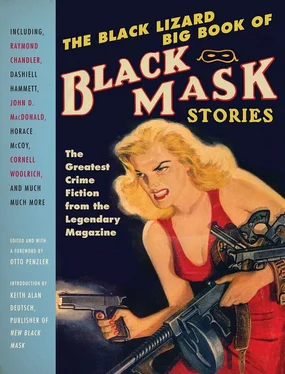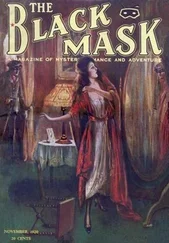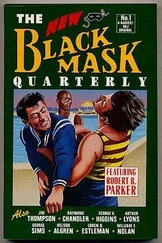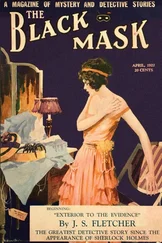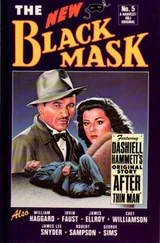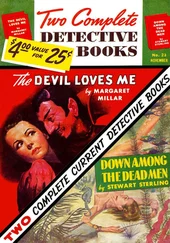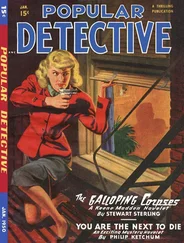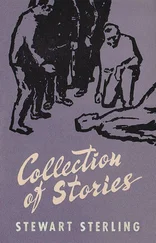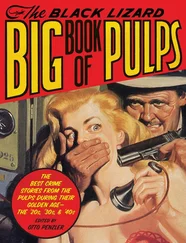I was struck by the power of these illustrations, and also by the dynamic way in which these original early editors introduced the stories in their headings and in editorial comments, and in response to letters written by the contributors. Sutton and North, and later Phil Cody, were interesting and intelligent editors, setting trends before the advent of the more famous Joseph Shaw.
Popular Publications was a valuable place for me to study, filled with thousands of issues of perfectly maintained pulp magazine issues of every genre imaginable. I became interested in the magazine publishing context in which Black Mask hit its stride in the late 1920s and through the 1930s. I also studied the bound volumes through the 1940s, when Popular Publications took over Black Mask.
I discovered that Henry Steeger, once Popular’s creative publisher, now had a small office in the Graybar Building near Grand Central Station. When I told Mr. Steeger I was preparing to edit and produce a new newsstand issue of Black Mask, he invited me over to talk and we became great magazine friends. Steeger had two brilliant ideas that contributed greatly to Popular’s success: First, inspired by the Grand Guignol theater, which he had seen in France, Steeger created Dime Mystery, a new kind of pulp that, along with its later companion titles Horror Stories and Terror Tales, started the “Shudder Pulp” publishing phenomenon. Second, Steeger understood the essential marketing psychology that gave birth to the pulp fiction magazine: that readers wanted exciting entertainment reading value, and so Steeger decided to title most of his fiction genre magazines with a value reminder, using “Dime” in his titles: Dime Detective, Dime Adventure, Dime Western, and so on. He told me that his appeal to value was one of his great strategies, and led to his extraordinary publishing success. In fact, Steeger’s Dime Detective became Black Mask ’s only true rival in the hard-boiled detective field.
Steeger was a brilliant editor. He explained how he raised his rates to attract writers who had long been associated with Black Mask to his magazines, especially Dime Detective. After the firing of Joseph Shaw from Black Mask in 1936, Steeger was able to attract even more famous Black Mask writers to his magazines. Raymond Chandler was probably his greatest catch. But Steeger also started increasing the number of series characters in Dime Detective so writers would have a steady venue to place heroes in the magazine who became familiar. And Steeger demanded that these new characters be exclusive to Dime Detective. Once he acquired Black Mask in 1940, he could use all his techniques on both of his hard-boiled magazines.
Like Munsey, Steeger was a magazine genius in his own right. In 1943, one year after he acquired Argosy from Munsey, Steeger changed the publication to a slick magazine. As an editor and a publisher, Steeger had innovative vision. He saw that the pulp market was fading in the 1940s. By the beginning of the 1950s, when Black Mask and most pulps had stopped publishing, Steeger had evolved Argosy into one of the largest-circulation general-interest magazines in the country. He was now making a fortune on advertising — something a slick could do more easily than a rough paper pulp. By the early 1950s, a single color page of advertising sold for over $5,000 in Argosy. And so when David Geller became interested in Argosy as a major advertising medium for both direct response and display advertising, Steeger sold all of his interest in Popular.
In the early 1970s, when I interviewed Steeger, I noted that general interest magazines were fading. Under David Geller’s editors, Argosy was losing its luster, it seemed to me. Steeger remained confident, and told me that if he were editing it he could attract a massive circulation again.
At some point in my Black Mask preparations, I remembered that I had seen Black Mask on the masthead of Ellery Queen’s Mystery Magazine, a publication started by one-half of the Ellery Queen writing team, Fred Dannay. EQMM was started in the 1940s as the pulps were fading. Carefully and beautifully edited, it was a success and continues to this day. Dannay had been a friend of Dashiell Hammett during the 1940s and 1950s and kept Hammett’s Black Mask stories in print in a series of paperback books and in EQMM. Always an excellent historian of mystery and detective fiction, Dannay saw a need to keep the hard-boiled tradition alive in the more sedate pages of his magazine and decided to include Black Mask on his masthead, maintaining in a modest way the title and the goodwill, and also giving him a department to feature tougher, darker stories by writers like Hammett and Cornell Woolrich.
I made contact with Joel Davis, the publisher of EQMM, and also the son of the founder of the famous magazine publishing house Ziff-Davis. He said I needed the permission of Fred Dannay, with whom I had a number of pleasant conversations, and I negotiated the purchase of the name and goodwill of Black Mask magazine, which Dannay had acquired from Steeger in the early 1950s.
During this time of preparation, I had been talking to the great literary agencies that had been around during the pulp days. I spoke with Carl Brandt of Brandt & Brandt, and Lurton Blassingame, both of whom had represented Black Mask contributors in the 1930s. I spent a day in Rafael DeSoto’s studio interviewing a man I consider the greatest Black Mask cover artist of the late 1930s and 1940s. DeSoto spoke widely about other pulp cover artists, interior illustrators, editors, and publishers at many of the great pulp magazine houses. I spoke to writers, too, like Curt Siodmak, who serialized his novel Donovan’s Brain for Black Mask in 1942. Curt had also scripted noir and horror films that made a lasting impact on popular entertainment, like Val Lewton’s I Walked with a Zombie and Universal’s The Wolf Man.
Word about my project got around. Lillian Hellman, Hammett’s executrix, made contact with me through Don Congdon, an influential agent. Hellman allowed me to reprint a Hammett Continental Op story in return for certain research I had done in the Black Mask stacks. Helga Greene, Raymond Chandler’s executrix, asked me to share my Raymond Chandler letters and information with Frank MacShane, a professor at Columbia who was writing an authorized critical biography of Chandler. Steven Marcus, another professor at Columbia, got in touch with me through Hellman. He was writing an introduction and editing a new collection of Hammett stories from Black Mask. It turned out that neither Marcus nor MacShane knew each other or their work on Black Mask fiction. I introduced them and we all met for a talk at Columbia.
I became friends with Prudence Whitfield and bought a few of her husband’s stories for the magazine from her. In time she told me wonderful stories about how Hammett, evidently her lover, had written lines in Hellman’s plays. Hammett and Raoul Whitfield had been friends since the early 1920s, and, when Prudence came along and married Raoul, she became one of the “hard-drinking boys.” She loaned me about ten unpublished Whitfield stories to read, but asked me not to copy them, and I didn’t.
Adrian Lopez decided not to continue publishing Black Mask, even though I had produced a second issue ready to go to press. The first issue had done well on the stands, and even garnered a spread in the Philadelphia Inquirer under the headline: “ Black Mask Returns to the Newsstand.” The reasons for abandoning the project are complex and no longer important. After my one issue came out, I received queries from many writers as well as Hollywood people. I continued working on Black Mask. I had a number of telephone conversations with James M. Cain, who wanted me to make it clear that he was not a hard-boiled writer and did not want to be lumped in with Hammett and the Black Mask boys. He considered his major theme one of sexual passion driving and corrupting behavior between a man and a woman in a doomed relationship.
Читать дальше
